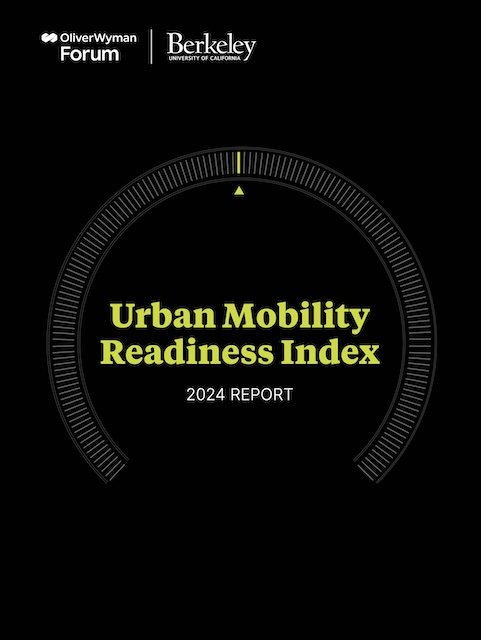Something called the Oliver Wyman Forum has worked with the University of California, Berkeley to publish an annual “urban mobility readiness index.” This is supposed to be a measure of how ready cities are for the coming “mobility revolution.” Unfortunately, it is more a measure of how ready cities are for the nineteenth-century’s mobility revolution.
 Click image to read this report.
Click image to read this report.
The latest index ranks San Francisco as the best in the world when in fact it is one of the least mobile cities and urban areas in the nation. Dallas and Houston, two of the most mobile urban areas in America, are ranked 34 and 35 out of 70 major cities. Considering that Moscow, one of the most mobility-repressed cities in the world, is ranked not far below Houston, this index isn’t providing much help regarding urban mobility.
The problem is that the authors of the report have already decided what will constitute the coming “mobility revolution”: electric cars, bicycles, mass transit, and autonomous vehicles. While I agree about autonomous vehicles, the electric car revolution has stuttered to a near-stop and bicycles and mass transit were revolutionary in the 1890s but today are insignificant on an urban scale except, maybe, in extremely poor places such as Nairobi and Lagos.
The report is written with rose-colored goggles that are hard for anyone who is truly familiar with transportation trends to believe. “Public transit is gaining momentum,” the report gushes, when it was declining before the pandemic and has failed to recover much more than three-fourths of its momentum since the pandemic. What they mean is that many cities are building nineteenth-century transit projects, which is hardly the same as momentum.
The report also claims that public buses and trains make cities more “resilient,” when — as I have described before — transportation systems that require heavy subsidies and can’t move anyone anywhere without some government-subsidized worker doing the moving for them are the very definition of non-resilient. Transportation systems that depend on roads and private vehicles will be most resilient in the event of pandemic, wildfires, floods, or other disruptive events.
The one thing San Francisco has that most other cities don’t is Waymo’s autonomous vehicle system. But that system doesn’t depend on any infrastructure available in San Francisco that isn’t available in almost any other city. In fact, San Francisco is more congested than many other cities due to its lack of sufficient infrastructure, a point that may have led Waymo to choose it for its pioneering operation just so it could prove that autonomous vehicles could work in places more crowded than Chandler, Arizona. As far as “readiness” goes, any city in America is just as ready as if not more ready for autonomous vehicles than San Francisco.
The purpose of reports that rank various cities, countries, or other geographic areas is to nudge places into adopting policies that the report writers think are good ones. In this case, the report writers got it all wrong, and cities that follow their policies will fail to enhance mobility or improve their readiness for the future.








Oliver Wyman is a management consulting company (part of Marsh McLennan), so “wishful thinking” and “getting it all wrong” is standard operating procedure.